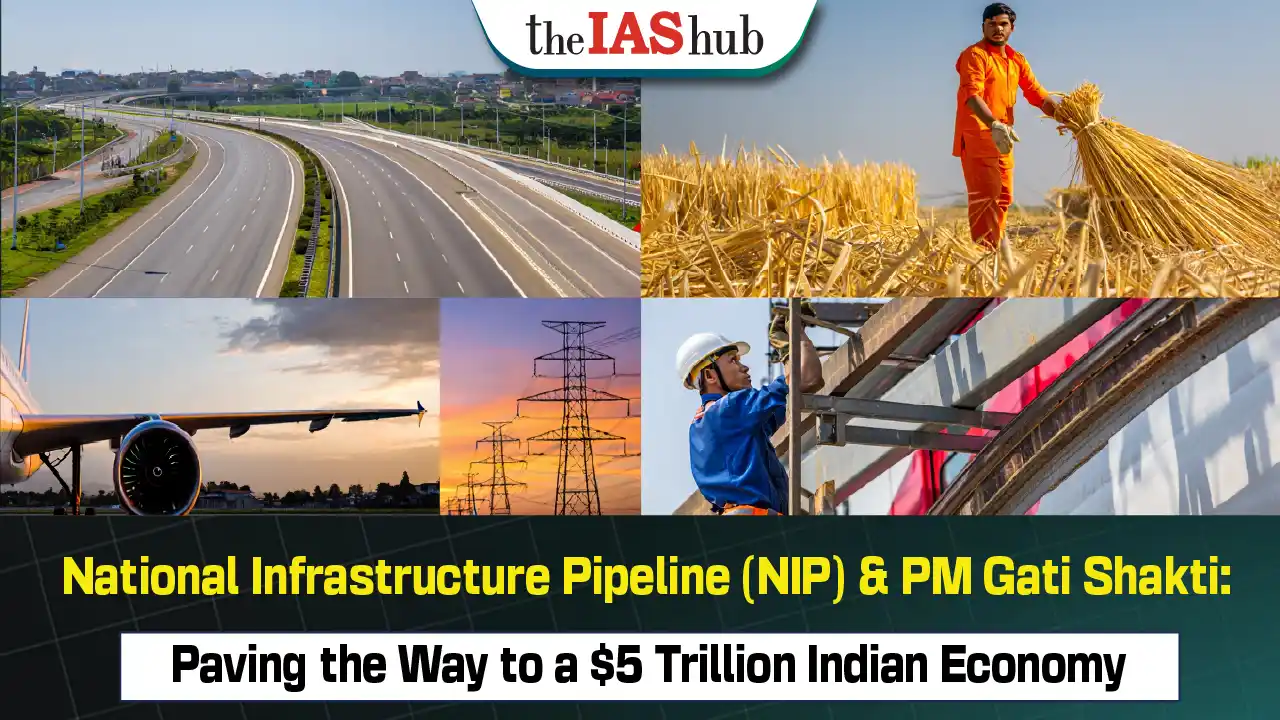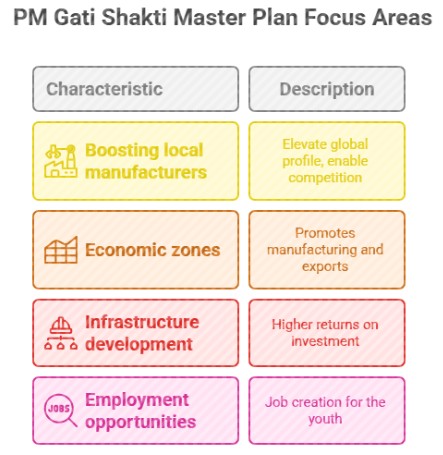Discover how India’s National Infrastructure Pipeline and PM Gati Shakti Master Plan aim to boost economic growth, job creation, and a $5 trillion economy through strategic infrastructure development and integrated planning.


India's pursuit of a 5 trillion Economy hinges greatly on the crucial role of infrastructure development. In a bid to accomplish this goal, the country has launched the 'National Infrastructure Pipeline (NIP)' initiative, aiming to bolster infrastructure and foster employment opportunities.
Furthermore, India has unveiled the 'PM Gati Shakti Master Plan', a monumental project worth Rs. 100 lakh crores, designed to holistically develop infrastructure and establish an integrated pathway for the country's economy.


The task force has proposed the following components under its Infrastructure Vision 2025, which encompasses strategic goals, innovative strategies, and standardized frameworks:
Economic growth and public well-being require infrastructure development. India's economic goals are advanced by the National Infrastructure Pipeline and Gati Shakti Master Plan. India can boost economic growth and job creation by investing in infrastructure. These initiatives must address implementation issues, secure adequate funding, and prioritise the health sector to succeed. India can reach a $5 trillion economy with a well-executed plan that benefits urban and rural areas and improves citizens' lives.


Refine your answer writing skills and elevate your UPSC preparation with personalized support and expert feedback.
Fill out the form to get started with the program or any other enquiries !








Are you dreaming of becoming an IAS officer? Then, IAShub can be your best guide. It is one of the Best IAS Coaching in Delhi. Many students who want to clear the UPSC exam join IAShub for learning. The institute gives both online and offline classes. Their teachers are experienced and helpful. They easily explain every topic. Students also get notes, tests, and tips to do well in the exam.
IAShub is in Delhi and is trusted by many UPSC students. It offers coaching for every part of the UPSC exam – Prelims, Mains, and Interview. The classes are simple and easy to understand. The teachers are experts and guide students in the right way. IAShub is also known for its helpful notes, test series, and answer-writing practice. IAShub is the best coaching in Delhi and also gives UPSC Online Classes. This helps students from any place in India to learn. The online classes are live and also recorded. So, students can watch them anytime. These classes cover the full UPSC syllabus.
Here are some important services provided by IAShub:
The UPSC Civil Services Exam has three parts:
This exam is tough, but with the right guidance, it becomes easy to manage. Students must study smart and stay regular.
IAShub supports students from the beginning to the end. It gives the right books, tests, and notes. The classes are easy to follow, and the teachers are always ready to help. Students get personal doubt sessions too. The test series and answer checking help students learn where they need to do better. Also, free study materials save time and money.
IAShub also guides students during the final stage – the interview. Experts take mock interviews and give useful tips. This full support makes IAShub one of the best IAS coaching in Delhi.